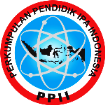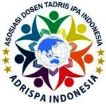Technology Augmented Reality Integration Hydrometeorology (TARIH) as Media Solution in Disaster Management for Physics Teacher Candidate
Abstract
This study aims to develop Augmented Reality Integration Hydrometereology (TARIH) technology as a learning media solution for disaster management from an early warning to the effects of land subsidence. The research method used in this study is the Model ADDIE (Analysis, Design, Develop, Implement, and Evaluate). The chosen subjects of the current study were 69 physics teacher candidates aged 21-23 years at a university in Jakarta and Banten, Indonesia. Based on reliability tests obtained in this line of research, the findings disclosed that the response to the application of TARIH as media in hydrometereology learning, the reliability of the System Quality aspect was 0.69 and the mean was 4.43. Most importantly, the reliability of the information quality aspect was 0.43 and the mean was 4.39 and the reliability of the service quality aspect was 0.74 and the mean was 4.45. Based on results obtained in this line of research, the study indicated that TARIH media can be used as a learning media solution in Disaster Management from an early warning.
Keywords: technology augmented reality integration hydrometeorology (TARIH), learning media, disaster learning media, physics teacher candidate.
Full Text:
PDFReferences
Akala, B. M. M. (2021). Revisiting Education Reform in Kenya: A Case of Competency Based Curriculum (CBC). Social Sciences & Humanities Open, 3(1), 100107.
Chen, C. H., Liu, J. H., & Shou, W. C. (2018). How Competition in A Game-Based Science Learning Environment Influences Students' Learning Achievement, Flow Experience, and Learning Behavioral Patterns. Journal of Educational Technology & Society, 21(2), 164-176.
Chytas, D., Johnson, E. O., Piagkou, M., Mazarakis, A., Babis, G. C., Chronopoulos, E., & Natsis, K. (2020). The Role of Augmented Reality in Anatomical Education: An Overview. Annals of Anatomy-Anatomischer Anzeiger, 229, 151463.
Diakakis, M., Skordoulis, M., & Savvidou, E. (2021). The Relationships Between Public Risk Perceptions of Climate Change, Environmental Sensitivity and Experience of Extreme Weather-Related Disasters: Evidence from Greece. Water, 13(20), 2842.
Faridi, H., Tuli, N., Mantri, A., Singh, G., & Gargrish, S. (2021). A Framework Utilizing Augmented Reality to Improve Critical Thinking Ability and Learning Gain of The Students in Physics. Computer Applications in Engineering Education, 29(1), 258-273.
Gernowo, R., & Sasongko, D. P. (2021). Tropical Convective Cloud Growth Models for Hydrometeorological Disaster Mitigation in Indonesia. Global Journal of Engineering and Technology Advances, 6(2), 114-120.
Hamzah, M. L., Rizal, F., & Simatupang, W. (2021). Development of Augmented Reality Application for Learning Computer Network Device. International Journal of Interactive Mobile Technologies, 15(12).
Herowati, D. K. (2022). Augmented Reality-Based Media to Improve Disaster Preparedness for Junior High School Students. In 5th International Conference on Current Issues in Education (ICCIE 2021) (pp. 164-168). Atlantis Press.
Kencana, H. P., Iswanto, B. H., & Wibowo, F. C.. Augmented Reality Geometrical Optics (AR-GiOs) for Physics Learning in High Schools. In Journal of Physics: Conference Series, 2021, 2019 9 (1), p. 012004). IOP Publishing.
Leebmann, J. (2004). An Augmented Reality System for Earthquake Disaster Response. International Archives of the Photogrammetry, Remote Sensing and Spatial Information Sciences, 34(Part XXX).
Liono, R. A., Amanda, N., Pratiwi, A., & Gunawan, A. A. (2021). A Systematic Literature Review: Learning with Visual By The Help of Augmented Reality Helps Students Learn Better. Procedia Computer Science, 179, 144-152.
Macariu, C., Iftene, A., & Gîfu, D. (2020). Learn Chemistry with Augmented Reality. Procedia Computer Science, 176, 2133-2142.
Richey, R.C, Klein, J.D. Tracey, The Instructional Design Knowledge Base: Theory, Research, and Practice. Publisher: Taylor & Francis. 2019.
Rodríguez Piedrabuena, A. (2021). Feasibility Study of Using Augmented Reality in Geotechnical Site Inspection (Bachelor's thesis, Universitat Politècnica de Catalunya).
Ruan, S., & Kang, J. (2020). Optimization Method of Disaster Scene Loading Under Mobile Augmented Reality Visualization. Geomatics and Information Science of Wuhan University. 45(9), 1422-1428.
Sanjaya, L. A., Putri, E. A., Wibowo, F. C., & Robby, D. K. (2021). Digital Storytelling of Physics (DiSPhy): Belajar Fisika melalui Cerita. Journal of Natural Science and Integration, 4(2), 195-203.
Sermet, Y., & Demir, I. (2020). Virtual and augmented reality applications for environmental science education and training. New Perspectives on Virtual and Augmented Reality: Finding New Ways to Teach in a Transformed Learning Environment, 261-275.
Velev, D., Zlateva, P., Steshina, L., & Petukhov, I. (2019). Challenges of Using Drones and Virtual/Augmented Reality for Disaster Risk Management. The International Archives of Photogrammetry, Remote Sensing and Spatial Information Sciences, 42, 437-440.
Wang, H., Tlili, A., Lehman, J. D., Lu, H., & Huang, R. (2021). Investigating Feedback Implemented by Instructors to Support Online Competency-Based Learning (CBL): A Multiple Case Study. International Journal of Educational Technology in Higher Education, 18(1), 1-21.
Wang, Y. S., Wang, H. Y., & Shee, D. Y. (2007). Measuring E-Learning Systems Success in An Organizational Context: Scale Development and Validation. Computers in Human Behavior, 23(4), 1792-1808.
Wijaya, R. E., Mustaji, M., & Sugiharto, H. (2021). Development of Mobile Learning in Learning Media to Improve Digital Literacy and Student Learning Outcomes in Physics Subjects: Systematic Literature Review. Budapest International Research and Critics Institute (BIRCI-Journal): Humanities and Social Sciences, 4(2), 3087-3098.
Wu, D. Y., Lin, J. H. T., & Bowman, N. D. (2022). Watching VR Advertising Together: How 3D Animated Agents Influence Audience Responses and Enjoyment to VR Advertising. Computers in Human Behavior, 107255.
Zhang, G., Gong, J., Li, Y., Sun, J., Xu, B., Zhang, D., & Yin, B. (2020). An Efficient Flood Dynamic Visualization Approach Based on 3D Printing and Augmented Reality. International Journal of Digital Earth, 13(11), 1302-1320.
Zhang, Z., Li, Z., Han, M., Su, Z., Li, W., & Pan, Z. (2021). An Augmented Reality-Based Multimedia Environment for Experimental Education. Multimedia Tools and Applications, 80(1), 575-590.
DOI: http://dx.doi.org/10.24014/jnsi.v5i1.16641
Refbacks
- There are currently no refbacks.

Journal of Natural Science and Integration
E-ISSN: 2620-5092 P-ISSN: 2620-4967
Published By:
Department of Science Education, Faculty of Education and Teacher Training,
State Islamic University of Sultan Syarif Kasim Riau, Indonesia
Mailing Address:
Jl. H.R Soebrantas Km. 15 No. 155
Kelurahan Simpang Baru
Kecamatan Tuah Madani, Pekanbaru, Riau, Indonesia
Email: jnsi.tadrisipa@uin-suska.ac.id
Indexed By:
Journal of Natural Science and Integration is licensed under a Creative Commons Attribution 4.0 International License.


_-_Copyy2.png)






.jpg)
.png)
.jpg)
.jpg)




